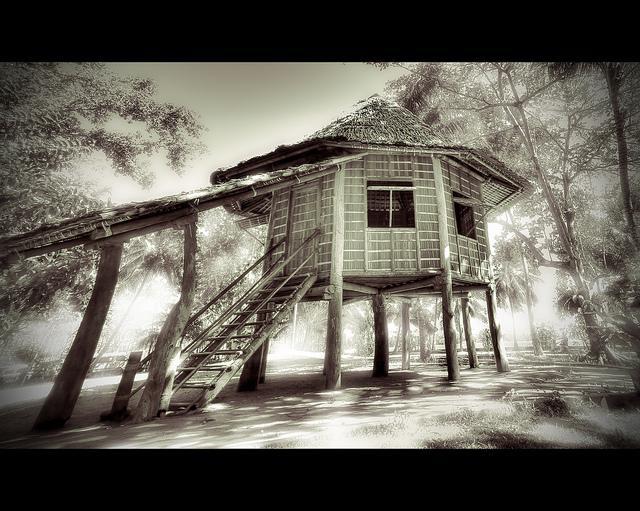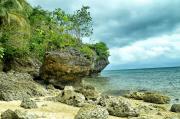
Jose Rizal's life as the Philippine's national hero has made such an impact on our consciousness, as he was able to change the course of history for Filipinos striving for independence. From the day he left Manila until July 31, 1896, Dapitan became witness to one of the most fruitful periods in Rizal's life. His stay in the province was more than living in exile – it was the period when Rizal had been more focused on serving the people and society through his civic works, medical practice, land development and promotion of education. There are numerous places in Dapitan where Rizal spent some of the best moments in his life.
Rizal Shrine – It is a national landmark featuring the site where our national hero Dr. Jose P. Rizal spent his last four years in exile. Withstanding the passage of time, it has been an irreplaceable historical monument that has been lovingly preserved and cherished by the people of the region.
Casa Residencia – It is the preserved structure of the main house which served as Rizal’s residence with his mother, sisters, close relatives and neighbors in Laguna that stayed with him in Dapitan.
Casa Redonda – This is an octagonal dwelling which served as the quarters for Rizal's pupils. It was later converted to a clinic and it was here where George Tauter, the foster father of Josephine Bracken, was operated on his eye. Casa Redonda Pequena is an hexagonal structure situated at the right side of the main house which served as a chicken house.
Casitas Hospitales – There are two of these structures which were originally intended as tea houses which Rizal converted into clinics to accommodate patients from far-flung municipalities.
Casa Quadrada – Rizal built this hut as a dormitory to accommodate the growing number of his pupils in Talisay School. The area underneath served as a workshop of the pupils.
Casitas de Salud – Originally, these were teahouses. When his fame as a physician spread to the entire Philippines and other countries, these were converted into wards to accommodate his patients from far-flung places.
The Rizaliana – It is a modern concrete building constructed in 1972 which houses all Rizaliana books, periodicals, and other historical exhibits. Part of it also serves as the office of the Rizal Shrine curator.
Mi Retiro Rock – In the old Dapitan history, this shaped rock was known as “Batong Lumayag” (sailing stone) for it appeared to be floating or sailing during high tide. Officially, this is called Mi Retiro Rock for it was here where Rizal wrote his longest poem, “Mi Retiro”, which was composed of 24 stanzas. Presently, it is within an artificial lagoon.
The Aqueduct – Rizal’s pupil and some other laborers built this aqueduct system or dam about 110 meters long and inclined walls of about 2.5 meters deep. A bamboo piping leads straight to the main haouse and kitchen. A forest and watershed higher up in a steep hill ensure the supply of water to the dam. The original dam still exists today.
Rizal’s Landing Site – The site where Rizal disembarked from the steamer “S.S. Cebu” located at Santa Cruz Beach. In 1565 with the arrival of Miguel Lopez de Legaspi, a 20-foot cross was erected to symbolize the propagation of Christianity in the area. Dr. Jose P. Rizal landed 7:00 o’clock p.m. on July 17, 1892 to begin the life of an exile in Dapitan. With Captain Delgras and three artillery men, they walked through Sta. Cruz Street with a “Farol de Combate” to the Casa Real where he was presented to Don Ricardo Carnicero, Spanish Military Governor of the District.
Dapitan City Plaza – The plaza which was designed, develop and beautified by Dr. Jose P. Rizal with the assistance of Governandor Ricardo Carnicero during his stay in Dapitan. He planned to make it comparable with the one he saw during his journey to Europe. Rizal provided the lighting system around the area (tree trunks with coconut oil lamps). The development was placed in September 1892.
Acacia Trees – Dr. Jose P. Rizal used to plant acacia trees to add beautification to the plaza of poblacion during his stay in Dapitan. Some of these acacia trees are still standing in the plaza of the city.
Holy Rosary Cathedral – Erected by the Spanish friars sometime in 1895, records show that the original altar was designed by Dr. Jose Rlzal, the sketch of the altar was patterned after that of San Ignacio Church in Manila. Holy Rosary Cathedral is located in Dipolog City nearby Dapitan.
Relief Map of Mindanao – Across St. James Church is a giant map of Mindanao on a total area of roughly 900 -square meters done by Dr. Jose Rizal with the help of Fr. Francisco de Paula Sanchez, S.J. Intended as a device for teaching history and geography to townsfolk, it also contributed to the beautification of the town plaza. It is of great interest to recall that Fr. Sanchez was Rizal's favorite teacher in Greek and Latin classics in the Ateneo. Sanchez arrived in Dapitan in August 1892 upon instructions from Spanish church authorities to convince Rizal to return to the Catholic faith. Rizal refused but he and Fr. Sanchez remained good friends until his execution at Bagumbayan.
Visit Dapitan’s century-old houses and churches, the aged fire trees and the 200-year-old baluno tree, and the indigenous teaching aid carabao grass–made map of Mindanao.
How to get there
• By Air: From Manila, Cebu Pacific offers daily flights to Dipolog City, the capital of Zamboanga Del Norte. Travelling by air takes approximately an hour.
• By sea: There are ferries that offer transportation from Manila to Dipolog City. These ferries often take the Port of Pulauan in Dapitan City, and from there one can take public transportations to get to the neighboring cities. The Strong Republic Nautical Highway (RORO) could also be taken. It takes less than 48 hours to get to Dipolog City.
• By land: Buses of the Rural Transit and the Evergood Trans Industries, Inc. travel to Dipolog city.
From Dipolog Airport, go to the Dipolog Bus terminal. Travel time is 15-20 minutes. The Rizal Shrine is approximately two kilometers from the Dapitan City Hall.
Accommodations
• Jardin de La Vina Hotel - 149 Governor Alvarez Avenue, Dipolog / Zamboanga, Philippines 7000
• GV Hotel Dipolog City - Quezon Avenue, Dipolog City, Zamboanga Del Sur, Dipolog / Zamboanga, Philippines
• Top Plaza Hotel - Echavez St.Corner Quezon Avenue, Dipolog / Zamboanga, Philippines 7100










